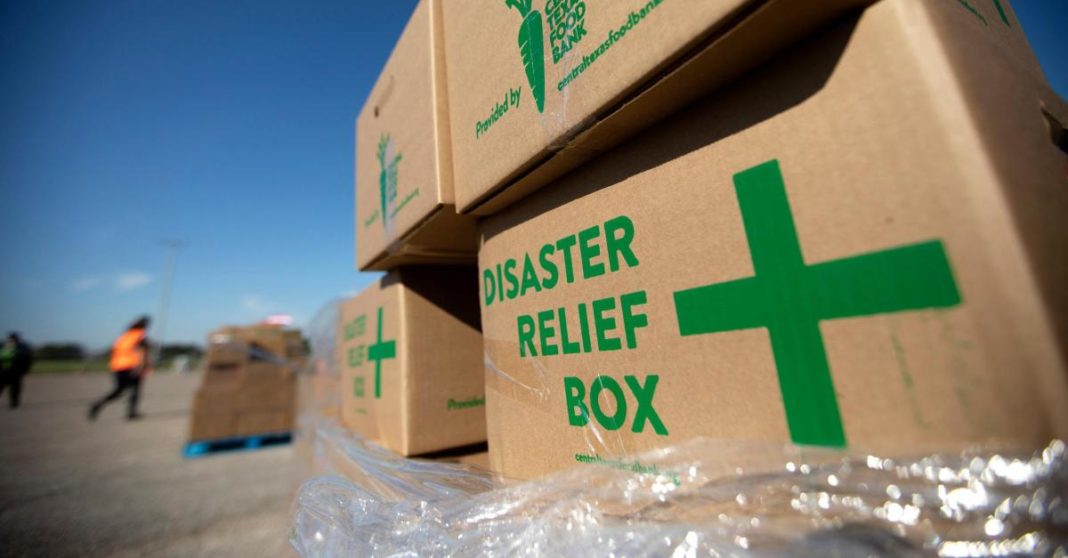With only two weeks before the funding expires, Texas’ state government still hasn’t spent about a quarter of the $8 billion it received from the federal coronavirus relief bill.
In March, the U.S. Department of the Treasury assigned $11.24 billion to local and state governments in Texas. Almost a third of that went directly to cities and counties with more than 500,000 people, which have been quick to use it for a wide range of measures, from rent assistance programs to temperature checks at city offices. The state distributed $1.85 billion to smaller jurisdictions and has been distributing the remaining $8 billion through its health, education and emergency agencies, among others.
The funds can pay for expenses incurred only until Dec. 30, according to federal guidelines. Gov. Greg Abbott’s office said that it will use the money by that deadline but would not give details on how.
“Governor Abbott has worked closely with legislative leaders and state agencies to allocate $6 billion so far, including an estimated $1.6 billion for [the Department of State Health Services] and [Texas Division of Emergency Management] to fund the state’s response through the end of the year,” said Renae Eze, a spokesperson for Gov. Greg Abbott, in a statement. “With $2 billion remaining of the original funding, the state will spend every dollar by the end of the year to ensure the health and well-being of all Texans.”
Unless the federal government decides to extend the Dec. 30 deadline, unspent funds will have to be returned to the Department of Treasury.
On Monday, Texas Agriculture Commissioner Sid Miller said the remaining funds should be used to help rural hospitals and food banks. With limited staffing and funding, rural hospitals have struggled to keep up with COVID-19 surges.
Food banks have also been strained, serving families in need that have experienced unemployment and wage cuts. Advocacy organizations said they are worried that in 2021 they won’t have enough to respond to demand. Two federal programs that have helped them through the pandemic are ending, and a state program that provides surplus groceries to them has been cut by 40%.
“It’s a very cost-efficient way — keeps down food waste and it serves the needs of a lot of hungry people,” Miller said in an interview Tuesday, who added he hasn’t heard from Abbott’s office yet. “There’s been zero response. The clock’s ticking and we need to move. Hopefully we will hear from the governor.”
State Rep. Donna Howard, D-Austin, said that there hasn’t been enough transparency in how the funds have been assigned. She called for a quick allocation in areas like personal protective equipment, support for schools and aid for health care institutions.
“We have 15 more days to alert the feds to how Texas intends to spend the rest of these dollars, or they have to be sent back,” Howard said. “There doesn’t seem to be any real dialogue that’s in place right now to have these kinds of discussions, because the Legislature has not been able to meet during the interim. We’ve been handicapped in terms of really having these discussions and doing the deep dives, asking the questions and having some oversight to the process.”
Housing advocacy groups have also argued that the money should be used to help renters in need, given that a moratorium on evictions ends Dec. 31, and rent assistance programs sometimes have been insufficient or slow.
“Our state’s leaders have to prioritize providing people who need help with direct cash assistance to pay the rent, pay the mortgage, pay the light bill and put food on the table,” said Christina Rosales, deputy director of Texas Housers. “Smaller local jurisdictions haven’t received their fair share of these funds to meet the needs in their communities. The governor’s office should be paying attention to what’s happening around the state and give local communities the tools and resources to serve the many who are worried about rent and basic needs.”
In the meantime, larger cities and counties are also preparing to spend the rest of their funds. Dallas, for example, had used $190 million of its $234 million as of Monday and plans to use all the funds by the deadline.
“It’s been critical for the city of Dallas and for other cities because of the pandemic,” said Elizabeth Reich, chief financial officer of the city of Dallas. “There are a lot of expenses that we have incurred because local government is where people turn when they need immediate assistance. We are the most direct source and point for folks to turn when they’re at their most vulnerable.”
Reich said the city would have probably had to dig into its reserve funds if the funding hadn’t been approved. City officials are hoping that a new stimulus package will keep helping so they can avoid having to spend their reserves in the next year.
“We know that coronavirus does not end on Dec. 30,” Reich said. “It’s critical that cities receive additional funding so that we can bounce back and we can grow and get the economy back on track.”
This story originally appeared on the Texas Tribune. To read this article in its original format, click here.







